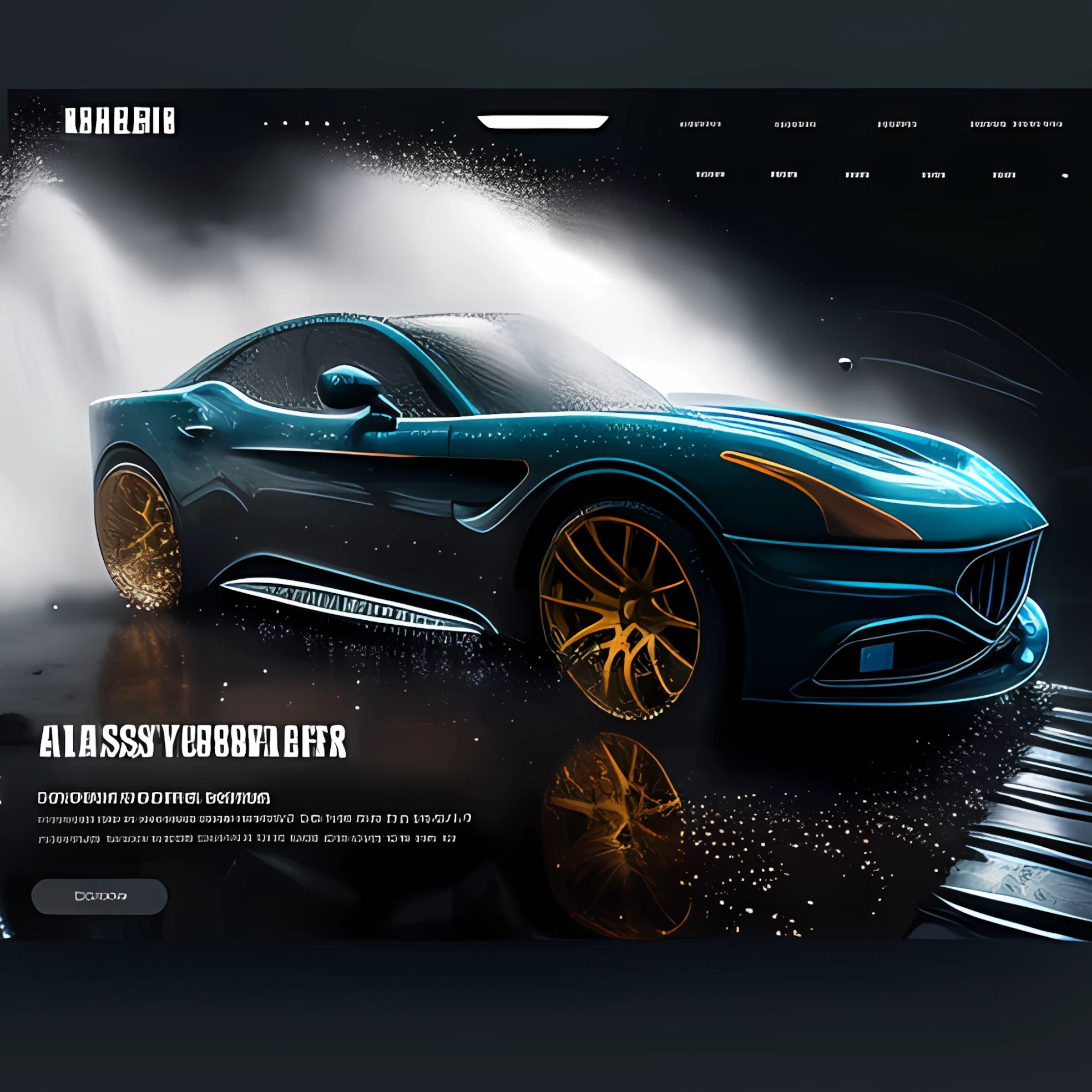Table of Contents
- Why VDPs Struggle to Rank (Even When You Have the Exact Car Someone Wants)
- 1. VDPs Don’t Target Real Keywords
- 2. The Language Doesn’t Match Shopper Intent
- 3. VDPs Disappear When the Vehicle Is Sold
- 4. Templates Are Cookie-Cutter
- 5. Schema Markup Is Generic or Missing
- 6. Slow Load Times (Especially on Mobile)
- 7. Zero Supporting Content
- The Result: Marketplaces Win ... Even When Dealers Have the Better Vehicle
- The Keywords Nobody Realizes Are Driving High-Intent Traffic
- How Dealerships Can Actually Capture These Keywords
- ✓ Category Pages Based on Real Search Demand
- ✓ Supporting Content That Builds Authority
- ✓ Better Schema + Faster Pages + Cleaner Templates
- ✓ Internal Linking That Connects VDPs to High-Intent Pages
Most dealerships assume their Vehicle Detail Pages (VDPs) are doing the heavy lifting in search. After all, every car has a page, every page has a VIN, and every page technically “exists” in Google’s index.
But here’s the truth:
VDPs do NOT rank for most high-intent, long-tail automotive searches and this is costing dealerships real traffic, real leads, and real sales.
If you’ve ever wondered why sites like Cars.com, CarGurus, AutoTrader, and Edmunds almost always outrank dealership websites for vehicle-specific queries, continue reading ....
Why VDPs Struggle to Rank (Even When You Have the Exact Car Someone Wants)
Google rarely ranks VIN-specific pages for buyer-intent keywords. It’s not because Google doesn’t like dealerships it’s because VDPs don’t give Google what it needs to see to believe the page is useful for the searcher.
Here are the core reasons:
1. VDPs Don’t Target Real Keywords
Most VDPs consist of auto-generated content pulled from a data feed.
There’s no keyword research, no optimization, and no attempt to align with what people actually search for.
Dealers list:
“2022 Ford F150 SuperCrew 4x4 Black – VIN 123456”
Buyers search for:
“used ford f150 under 30k atlanta”
“black f150 4x4 near me”
There is a mismatch.
2. The Language Doesn’t Match Shopper Intent
VDPs use OEM descriptions or generic listing feed text.
But real people use casual, problem-focused language, not spec-sheet language.
No VDP naturally includes phrases like:
- “best used truck for towing under 20k”
- “affordable SUVs for teens”
- “reliable family car with 3rd row seating”
Google sees the disconnect and simply ranks someone else.
3. VDPs Disappear When the Vehicle Is Sold
Google hates ranking “temporary pages.”
If your page vanishes every time a car is sold, Google has no reason to invest in crawling or ranking those pages.
Meanwhile, marketplace sites have permanent category pages with years of history and signals.
Dealerships don’t.
4. Templates Are Cookie-Cutter
Dealer websites are typically built from standardized templates, making thousands of VDPs across the country nearly identical.
When Google sees 50,000 pages with the same structure, same layout, same headings, and same markup, it picks the sites with the strongest domain authority.
And that’s not the dealership, it’s the marketplace.
5. Schema Markup Is Generic or Missing
Search engines rely heavily on structured data to understand:
- Vehicle condition
- Trim
- Feature highlights
- Pricing
- Location
- Availability
Most dealership VDPs either lack this markup or have overly generic versions that add no real SEO value.
6. Slow Load Times (Especially on Mobile)
Many dealership sites use bloated scripts, oversized images, or third-party tools that destroy Core Web Vitals.
Google measures:
- Largest Contentful Paint (LCP)
- Time to Interactive
- Cumulative Layout Shift
VDPs often fail across the board. Slow pages don’t rank!
7. Zero Supporting Content
VDPs exist in isolation.
There’s no content hub, no category guide, no internal linking network, and no topical authority.
Google can’t connect your page to any broader context.
Marketplace sites, on the other hand, have:
- Buyer guides
- Comparison tools
- Reviews
- Category landing pages
- Rich content ecosystems
Dealership sites simply don’t compete.
The Result: Marketplaces Win ... Even When Dealers Have the Better Vehicle
Even if 100 dealerships list the same:
“2022 Black Ford F-150 4x4”
Google almost always serves:
- Cars.com
- CarGurus
- AutoTrader
- Edmunds
Because those sites match intent, answer more questions, load faster, and stay online forever.
Your VDP doesn’t stand a chance.
The Keywords Nobody Realizes Are Driving High-Intent Traffic
Here’s where the real opportunity lies:
Buyers don’t just search for VINs or exact trims, they search using practical, price-driven, location-driven language.
For example:
- “used tahoe under 25k atlanta”
- “trucks under 20k near me”
- “best used suv for families houston”
- “cheap 4x4 trucks for sale dallas”
- “awd sedans under 15k”
These search terms convert extremely well.
But dealership VDPs almost never appear for them.
Marketplaces dominate these searches but they don’t even own the inventory.
Dealers do.
This is the most painful keyword gap in automotive SEO.
How Dealerships Can Actually Capture These Keywords
The solution isn’t complicated, but almost no dealerships do it.
You need strategic content + structured pages + intent-matched landing pages that don’t disappear when a car sells.
The winning approach typically includes:
✓ Category Pages Based on Real Search Demand
Examples:
- “Used Trucks Under 20k in Phoenix”
- “Affordable AWD Sedans in Chicago”
- “Used Chevy Tahoe Deals in Atlanta”
These pages stay live year-round and dynamically update inventory.
✓ Supporting Content That Builds Authority
Think:
- Guide: “Best Used SUVs for Families Under 30k”
- Guide: “What to Look for When Buying a Used F-150”
- Guide: “Top Affordable Trucks for First-Time Buyers”
This builds trust and gives Google more reasons to rank you above marketplaces.
✓ Better Schema + Faster Pages + Cleaner Templates
When you fix the technical issues, Google starts trusting the whole site more.
✓ Internal Linking That Connects VDPs to High-Intent Pages
This gives every vehicle more SEO visibility and spreads page authority.
Dealerships think SEO means ranking for their dealership name or their inventory feed.
But the biggest wins come from owning the long-tail, price-based, problem-based keywords buyers actually use.
Right now, marketplaces dominate those terms but they don’t have to.
Dealers who fill these hidden keyword gaps will:
- Get more organic traffic
- Capture more high-intent leads
- Outrank marketplace giants
- Reduce dependence on paid ads
And best of all?
They’ll generate leads before competitors even know the opportunity exists.
Frequently Asked Questions
Because VIN-based pages aren’t built to target keywords. They’re not optimized for real search intent. VDPs disappear when the vehicle sells, they rarely contain descriptive content, they use generic templates, and they rarely match the wording used by buyers on Google.
Dealerships miss thousands of monthly searches such as:
- “Used Tahoe under 25k near me”
- “Best trucks under 20k”
- “Black F-150 4x4 for sale”
- “SUV with 3rd row under $15k”
These convert extremely well—but VDPs rarely appear for them.
Because Google does not prioritize VIN-specific pages for broad or long-tail searches. A page titled “2022 Ford F-150 VIN #1234ABCD” doesn’t match the way real humans search. Google prefers pages that match user language and search intent.
Because marketplace sites have:
- Massive supporting content
- Thousands of internal links
- Stronger domain authority
- Better structured data
- Dynamic filters and search pages that match real search terms
Dealerships rely on template pages. Marketplaces rely on content and intent.
Yes—but only for hyper-specific searches like VIN lookups or exact-match year/make/model queries. Outside of that, VDPs rarely dominate search.
You lose the indexed page, you lose the traffic, and you lose all the ranking signals that page built. Multiply this by hundreds of sold vehicles, and you never accumulate SEO momentum.
Dealerships should create:
- Model landing pages (F-150, Silverado, Civic, etc.)
- Trim and package pages
- Price-based pages (“trucks under $20,000”)
- Feature pages (“3rd-row SUVs,” “best towing trucks”)
- Comparison pages (“Civic vs Corolla”)
- Buyer-intent landing pages (“best used SUVs under 15k in Nebraska”)
These pages capture search intent that VDPs never will.
No.
Inventory feeds create cookie-cutter pages with:
- Generic titles
- Thin descriptions
- Duplicate content
- Missing schema
- No supporting text
Google has no reason to rank these pages over marketplace giants.
If your landing pages load slowly, lack content, or don’t match search intent, your PPC campaigns suffer. Poor landing page experience equals:
- Higher CPCs
- Lower quality scores
- Lower conversion rates
- Lower return on ad spend
Strong pages can reduce PPC costs significantly.
Start by identifying which search terms you don’t rank for.
Then build content-rich pages that align with:
- How buyers search
- What buyers compare
- What buyers filter by
- Price ranges
- Features
- Packages
- Trims
Dealerships that do this dominate search—because very few are doing it today.
No. They vary based on:
- Market competition
- Inventory type
- Geography
- Marketplace dominance
- Your existing site structure
But EVERY dealership has them.
Depending on market size, it can mean hundreds to thousands of new monthly visitors—traffic that converts at the highest rate because these are late-stage buyers.
Yes.
Used vehicle searches are more specific and long-tail (color, trim, price), while new-vehicle searches are more comparison and feature-driven. Both require different content approaches.
No.
Most fixes involve:
- Writing better landing page content
- Adding supporting pages
- Improving site speed
- Using proper schema
- Restructuring how inventory is presented
No new website needed—just smarter content.
If buyers never find your dealership in search—because you’re being outranked by marketplace sites—the result is simple:
Less traffic → fewer leads → fewer sales.
Fixing keyword gaps solves this.



Comments
Log in to add a comment.